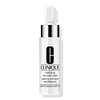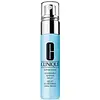What's inside
What's inside
 Key Ingredients
Key Ingredients

 Benefits
Benefits

 Concerns
Concerns

 Ingredients Side-by-side
Ingredients Side-by-side

Water
Skin ConditioningAlcohol Denat.
AntimicrobialGlycolic Acid
BufferingLactic Acid
BufferingSalicylic Acid
MaskingSodium Hydroxide
BufferingButylene Glycol
HumectantHamamelis Virginiana Extract
AntiseborrhoeicPadina Pavonica Thallus Extract
Skin ConditioningLactobionic Acid
BufferingYeast Extract
Skin ConditioningAcetyl Glucosamine
Skin ConditioningTartaric Acid
BufferingPyruvic Acid
MaskingGlycerin
HumectantCitric Acid
BufferingCaprylyl Glycol
EmollientDisodium EDTA
Benzalkonium Chloride
AntimicrobialPhenoxyethanol
PreservativeWater, Alcohol Denat., Glycolic Acid, Lactic Acid, Salicylic Acid, Sodium Hydroxide, Butylene Glycol, Hamamelis Virginiana Extract, Padina Pavonica Thallus Extract, Lactobionic Acid, Yeast Extract, Acetyl Glucosamine, Tartaric Acid, Pyruvic Acid, Glycerin, Citric Acid, Caprylyl Glycol, Disodium EDTA, Benzalkonium Chloride, Phenoxyethanol
Water
Skin ConditioningCyclopentasiloxane
EmollientDimethicone
EmollientPolysilicone-11
Acetyl Glucosamine
Skin ConditioningPEG-10 Dimethicone
Skin ConditioningVitis Vinifera Fruit Extract
Skin ConditioningMorus Nigra Root Extract
Skin ConditioningHordeum Vulgare Extract
EmollientCastanea Sativa Seed Extract
Skin ConditioningSalicylic Acid
MaskingPolygonum Cuspidatum Root Extract
AntioxidantCholesterol
EmollientSaccharomyces Lysate Extract
HumectantOryza Sativa Bran Extract
Skin ConditioningLactobionic Acid
BufferingScutellaria Baicalensis Root Extract
AstringentGlycine Soja Seed Extract
Skin ConditioningSalvia Sclarea Extract
AntiseborrhoeicTriticum Vulgare Germ Extract
Skin ConditioningSoy Amino Acids
Skin ConditioningDi-C12-18 Alkyl Dimonium Chloride
Skin ConditioningCaffeine
Skin ConditioningGlycerin
HumectantLaminaria Saccharina Extract
Skin ProtectingCreatine
Skin ConditioningAcetyl Carnitine Hcl
Skin ConditioningSqualane
EmollientGlycyrrhetinic Acid
Skin ConditioningAdenosine Phosphate
Skin ConditioningEthylhexylglycerin
Skin ConditioningPolysorbate 80
EmulsifyingSodium Hyaluronate
HumectantIsohexadecane
EmollientCaprylyl Glycol
EmollientButylene Glycol
HumectantCitric Acid
BufferingPolysorbate 20
EmulsifyingAcrylamide/Sodium Acryloyldimethyltaurate Copolymer
Emulsion StabilisingAmmonium Acryloyldimethyltaurate/Vp Copolymer
Yeast Extract
Skin ConditioningTocopheryl Acetate
AntioxidantHexylene Glycol
EmulsifyingPhytic Acid
Sodium Hydroxide
BufferingDisodium EDTA
BHT
AntioxidantPhenoxyethanol
PreservativeMica
Cosmetic ColorantCI 77891
Cosmetic ColorantWater, Cyclopentasiloxane, Dimethicone, Polysilicone-11, Acetyl Glucosamine, PEG-10 Dimethicone, Vitis Vinifera Fruit Extract, Morus Nigra Root Extract, Hordeum Vulgare Extract, Castanea Sativa Seed Extract, Salicylic Acid, Polygonum Cuspidatum Root Extract, Cholesterol, Saccharomyces Lysate Extract, Oryza Sativa Bran Extract, Lactobionic Acid, Scutellaria Baicalensis Root Extract, Glycine Soja Seed Extract, Salvia Sclarea Extract, Triticum Vulgare Germ Extract, Soy Amino Acids, Di-C12-18 Alkyl Dimonium Chloride, Caffeine, Glycerin, Laminaria Saccharina Extract, Creatine, Acetyl Carnitine Hcl, Squalane, Glycyrrhetinic Acid, Adenosine Phosphate, Ethylhexylglycerin, Polysorbate 80, Sodium Hyaluronate, Isohexadecane, Caprylyl Glycol, Butylene Glycol, Citric Acid, Polysorbate 20, Acrylamide/Sodium Acryloyldimethyltaurate Copolymer, Ammonium Acryloyldimethyltaurate/Vp Copolymer, Yeast Extract, Tocopheryl Acetate, Hexylene Glycol, Phytic Acid, Sodium Hydroxide, Disodium EDTA, BHT, Phenoxyethanol, Mica, CI 77891
 Reviews
Reviews

Ingredients Explained
These ingredients are found in both products.
Ingredients higher up in an ingredient list are typically present in a larger amount.
Acetyl Glucosamine is an antioxidant and humectant. It is an amino acid sugar and is naturally found in our skin.
The cool thing about this ingredient? It helps the skin produce hyaluronic acid and boost hydration. It also has antioxidant benefits to protect skin cells.
When paired with niacinamide, Acetyl Glucosamine has been shown to be effective at reducing discoloration.
Learn more about Acetyl GlucosamineButylene Glycol (or BG) is used within cosmetic products for a few different reasons:
Overall, Butylene Glycol is a safe and well-rounded ingredient that works well with other ingredients.
Though this ingredient works well with most skin types, some people with sensitive skin may experience a reaction such as allergic rashes, closed comedones, or itchiness.
Learn more about Butylene GlycolCaprylyl Glycol is a humectant and emollient, meaning it attracts and preserves moisture.
It is a common ingredient in many products, especially those designed to hydrate skin. The primary benefits are retaining moisture, skin softening, and promoting a healthy skin barrier.
Though Caprylyl Glycol is an alcohol derived from fatty acids, it is not the kind that can dry out skin.
This ingredient is also used as a preservative to extend the life of products. It has slight antimicrobial properties.
Learn more about Caprylyl GlycolCitric Acid is an alpha hydroxy acid (AHA) naturally found in citrus fruits like oranges, lemons, and limes.
Like other AHAs, citric acid can exfoliate skin by breaking down the bonds that hold dead skin cells together. This helps reveal smoother and brighter skin underneath.
However, this exfoliating effect only happens at high concentrations (20%) which can be hard to find in cosmetic products.
Due to this, citric acid is usually included in small amounts as a pH adjuster. This helps keep products slightly more acidic and compatible with skin's natural pH.
In skincare formulas, citric acid can:
While it can provide some skin benefits, research shows lactic acid and glycolic acid are generally more effective and less irritating exfoliants.
Most citric acid used in skincare today is made by fermenting sugars (usually from molasses). This synthetic version is identical to the natural citrus form but easier to stabilize and use in formulations.
Read more about some other popular AHA's here:
Learn more about Citric AcidDisodium EDTA plays a role in making products more stable by aiding other preservatives.
It is a chelating agent, meaning it neutralizes metal ions that may be found in a product.
Disodium EDTA is a salt of edetic acid and is found to be safe in cosmetic ingredients.
Learn more about Disodium EDTAGlycerin is already naturally found in your skin. It helps moisturize and protect your skin.
A study from 2016 found glycerin to be more effective as a humectant than AHAs and hyaluronic acid.
As a humectant, it helps the skin stay hydrated by pulling moisture to your skin. The low molecular weight of glycerin allows it to pull moisture into the deeper layers of your skin.
Hydrated skin improves your skin barrier; Your skin barrier helps protect against irritants and bacteria.
Glycerin has also been found to have antimicrobial and antiviral properties. Due to these properties, glycerin is often used in wound and burn treatments.
In cosmetics, glycerin is usually derived from plants such as soybean or palm. However, it can also be sourced from animals, such as tallow or animal fat.
This ingredient is organic, colorless, odorless, and non-toxic.
Glycerin is the name for this ingredient in American English. British English uses Glycerol/Glycerine.
Learn more about GlycerinLactobionic Acid is a PHA. PHAs are the gentle cousins to AHAS.
Like AHAs, they exfoliate the top layer of skin. Lactobionic acid also exhibits significant antioxidant activity.
PHAs are more gentle than AHAs due to their larger structure. This means they do not penetrate as deeply as AHAs and take a longer time to dissolve dead cells. Studies show PHAs do not cause as much irritation.
By removing dead skin cells, PHAs leave the skin brighter and with even-texture.
Learn more about Lactobionic AcidPhenoxyethanol is a preservative that has germicide, antimicrobial, and aromatic properties. Studies show that phenoxyethanol can prevent microbial growth. By itself, it has a scent that is similar to that of a rose.
It's often used in formulations along with Caprylyl Glycol to preserve the shelf life of products.
Salicylic Acid (also known as beta hydroxy acid or BHA) is a well-known ingredient for treating skin that struggles with acne and clogged pores. It exfoliates both the skin's surface and deep within the pores to help clear out buildup, control oil, and reduce inflammation.
Unlike AHAs (alpha hydroxy acids), salicylic acid is oil-soluble. This allows it to penetrate into pores which makes it especially effective for treating blackheads and preventing future breakouts.
Salicylic acid is also known for its soothing properties. It has a similar structure to aspirin and can calm inflamed or irritated skin, making it a good option for acne-prone skin that is also sensitive.
Concentrations of 0.5-2% are recognized by the U.S. FDA as an over-the-counter topical acne product.
It can cause irritation and/or dryness if one's skin already has a compromised moisture barrier, so it's best to focus on repairing that before introducing this ingredient into your routine.
While salicylic acid does not increase sun sensitivity, it’s still important to wear sunscreen daily to protect your skin.
If you are looking for the ingredient called BHA or Butylated Hydroxyanisole, click here.
Learn more about Salicylic AcidSodium Hydroxide is also known as lye or caustic soda. It is used to adjust the pH of products; many ingredients require a specific pH to be effective.
In small amounts, sodium hydroxide is considered safe to use. However, large amounts may cause chemical burns due to its high alkaline.
Your skin has a natural pH and acid mantle. This acid mantle helps prevent harmful bacteria from breaking through. The acid mantle also helps keep your skin hydrated.
"Alkaline" refers to a high pH level. A low pH level would be considered acidic.
Learn more about Sodium HydroxideWater. It's the most common cosmetic ingredient of all. You'll usually see it at the top of ingredient lists, meaning that it makes up the largest part of the product.
So why is it so popular? Water most often acts as a solvent - this means that it helps dissolve other ingredients into the formulation.
You'll also recognize water as that liquid we all need to stay alive. If you see this, drink a glass of water. Stay hydrated!
Learn more about WaterYeast extract is a silky, clear liquid derived from yeast (usually Saccharomyces cerevisiae or Torula yeast).
This ingredient has plenty of skin benefits:
Bioferments of yeast and soy have been found to reduce hyperpigmentation at low levels.
Due to its fatty acid content, this ingredient may not be fungal-acne safe.
Learn more about Yeast Extract